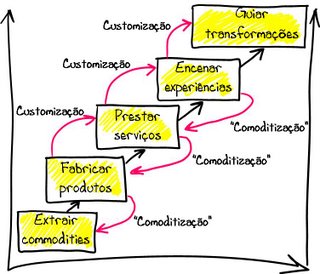Há uns anos, quando li a estória pela primeira vez, elogiei-os pela ideia e pelo agitar das águas fétidas e calmas habituadas à conversa do preço mais baixo. Recordar "
Proactividade no sector do leite (parte I)"
.
No entanto, fez ontem exactamente um mês escrevi "
Soa-me estranho ..." que termina desta forma triste e desanimada:
"Fico desconfiado que não acreditam na estratégia que definiram... que afinal não passa de marketing."
Esta manhã fui ao talho a Estarreja. Como de costume estacionei o carro longe da confusão, junto a uma pouco frequentada loja do Minipreço.
.
No regresso ao carro tive uma surpresa!
.
Num flash... Hermann Simon, o Evangelho do Valor, Marn e Rosielo, Ron Baker, este blogue, passaram pela minha cabeça.
.
Com uma certa tristeza, saquei do telefone para fotografar o que acabara de ver... a comprovação do que escrevera naquele postal de Maio passado:
Então uma empresa desenvolve uma estratégia baseada na diferenciação, para se decomoditizar, apela a vantagens competitivas que reforcem o valor percepcionado pelos potenciais clientes e, depois, lança a novidade como se fosse um produto de preço-baixo? Qual é a lógica?
.
Será que na Bel ninguém estuda o
Evangelho do Valor? Será que ninguém percebe que a lógica da diferenciação tem de jogar noutro campeonato?
.
Será que se habituarem os clientes desde o início a preço-baixo para o leite de pastagem alguma vez o conseguirão colocar no patamar de preço mais alto, justificável pelos atributos e, sobretudo pelo intangível associado à narrativa das vacas felizes da pastagem ao ar livre?
.
Será que a malta do marketing, e a da comercial, e a da da gestão estratégica na Bel conversa entre si?
.
Continua, com uma lição útil para a Bel e para todas as empresas, sobretudo aquando da próxima crise financeira que o país vai viver.







%2006.21.jpeg)












